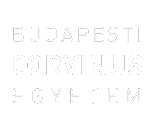Hujber, Pál (2021) A House That Does Not Exist : Ritual Communication and Mythmaking in Online Communities. BA/BSc szakdolgozat, BCE Kommunikáció és Szociológia Intézet, Kommunikáció- és Médiatudomány Tanszék. Szabadon elérhető változat / Unrestricted version: http://publikaciok.lib.uni-corvinus.hu/publikus/szd/Hujber_Pal.pdf
|
PDF
- Requires a PDF viewer such as GSview, Xpdf or Adobe Acrobat Reader
475kB |
Szabadon elérhető változat: http://publikaciok.lib.uni-corvinus.hu/publikus/szd/Hujber_Pal.pdf
Absztrakt (kivonat)
This paper, after reviewing some of the relevant literature, including, but not limited to Jeffrey C. Alexander (2005), James W. Carey (2009) Császi Lajos (2002), and Joshua Meyerowitz (1985), expands on the notions and theories therein, in a way that they can be applied to the unique group dynamics of online environments. Groups are examined as social situations prolonged in time, where social situations are defined by information access, and the implications of this definition are examined as they relate to research in, and conceptualization of internet communities. Dynamics of credibility, authenticity, and authority in such communities, as well as the role distinction between online and offline personas are examined through the lens of a variety of theories. After this, this paper examines a process by which certain pieces of content become mythologized within an online community as parts of the group’s unique cultural environment. The paper examines this process from several angels, such as how it helps the group in question to maintain its distinction from outside actors, as well as how it my help a group maintain hierarchical structures within itself. The most significant contribution to existing literature is that present paper proposes a novel model by which this mechanism can be generalized, and a distinction between types of content in regard to how they relate to this model, and what role they play in the formation of the culture of a given community. Afterwards, the model is put into practice by ways of two case studies on two internet communities drastically different from each other. These case studies used a method of non-intrusive observation and manual sampling. The model is then expanded to include the facilitating factors of the mythmaking mechanism using the observations made during the case studies. The paper seeks to put this novel way of examining internet cultures in service of not just understanding particular groups in insularity, but also of gaining insight into the dynamics that take place in online spaces in a more general sense. The case studies attempt to cover as much variety as possible within the limited scope of this paper, examining two communities that differ from one another drastically not just in the type of content produced, but in their hierarchical structures, degrees of information sharing between members, forms of tangible non-online action, and even their online perception from outside the community itself. Possible applications and implications of using the model in non-online environments are briefly discussed as well. The paper examines the unique challenges and opportunities regarding research methodology in online environments and proposes methodology by which the research and theoretic propositions in this essay can be reinforced and re-examined in the future, possible use cases of artificial intelligence and machine learning in social research are discussed in this section, along with unique opportunities to conduct non-intrusive observations provided by the online environment.
| Tétel típus: | BA/BSc szakdolgozat |
|---|---|
| Témakör: | Média és kommunikáció |
| Azonosító kód: | 14784 |
| Képzés/szak: | Communication and Media Science |
| Elhelyezés dátuma: | 12 Szept 2022 09:02 |
| Utolsó változtatás: | 12 Szept 2022 10:33 |
Csak a repozitórium munkatársainak: tétel módosító lap

